Group B – Other Wildlife Animals
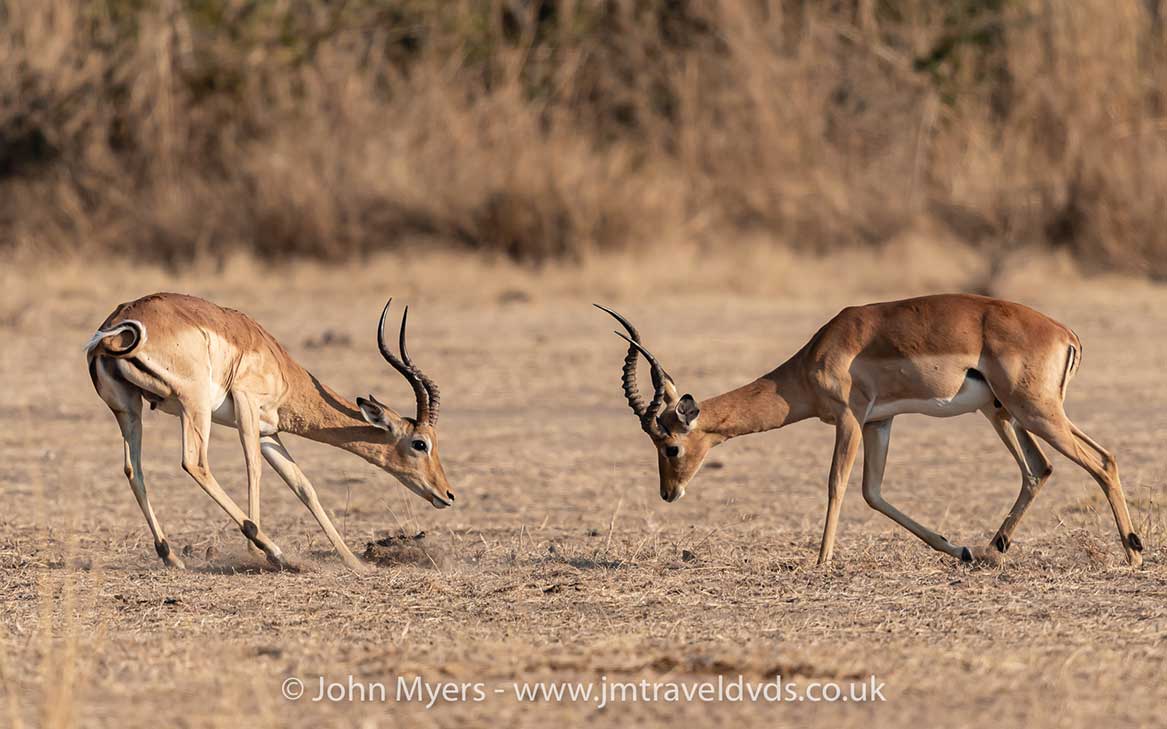
022. ‘LOCK HORNS’. Impala. Kafunta Lodge Area, South Luangwa National Park, Zambia
Impalas are an often overlooked species because they are seen in abundance, but they are interesting animals. The rutting season is when the males start fighting for territory and females. This takes place usually in April. So now at the end of August, the peak of the dry season, this sort of behaviour should be over. Maybe this is just practice and is purely taken as fun.
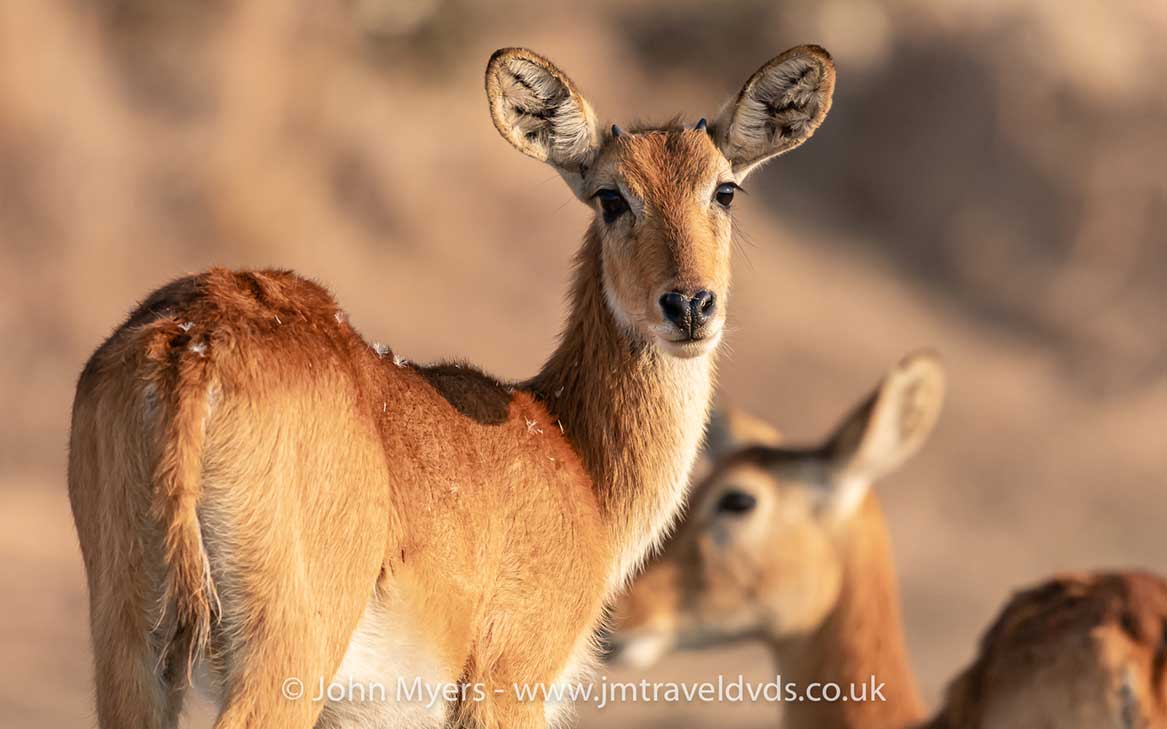
023. ‘ALWAYS ALERT’. Pukus. Lion Camp Area, South Luangwa National Park, Zambia
Pukus are medium sized antelope. They are abundant in Zambia. As with many of Africa’s antelope, they live in herds of females, youngsters and immature males, headed by a dominant male. Being predominantly grazers, they thrive along the waterways in Luangwa where the best grass can be found.

024. ‘NOSE AHEAD’. Zebras. Lion Camp Area, South Luangwa National Park, Zambia
Slowing down the camera shutter speed allows a slight blurring of the subject. This is most often performed with running water. The result is a smoothing over of the water. It results in an interesting effect when applied to the running of these two Crawshey zebras.

025. ‘HOLD ON’. Baboons. Tena Tena Lodge Area, South Luangwa National Park, Zambia
Yellow baboons are found in great numbers along the Luangwa river valley. They are seldom found far away from the safety of trees. It is to these trees that they ascend to sleep. During the day they descend and interact as a family social group.
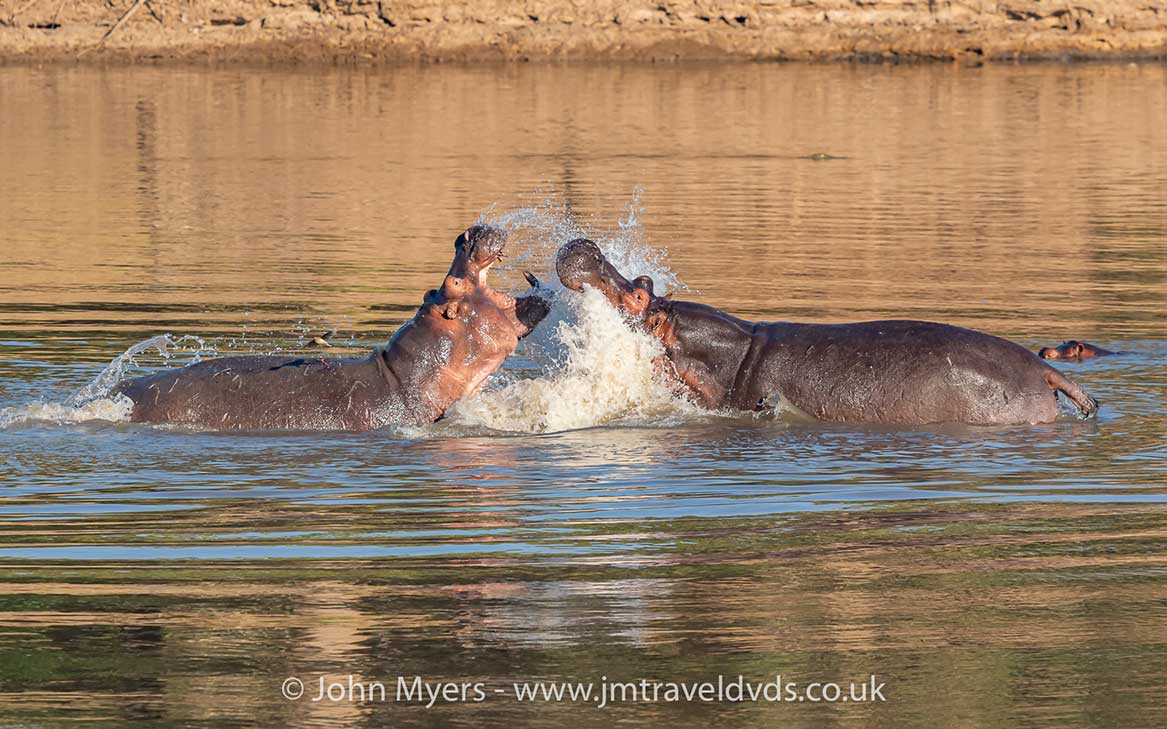
026. ‘MAKING A SPLASH’. Hippos. Nsefu Sector, South Luangwa National Park, Zambia
The name ‘Hippopotamus’ comes from the Greek for ‘river horse’. After elephant and rhinoceros, it is the third largest mammal. The hippo is territorial in water only. A bull presides over a certain stretch of river containing about ten females. Yawning serves as a threat display. When fighting, males use their incisors to block attacks.
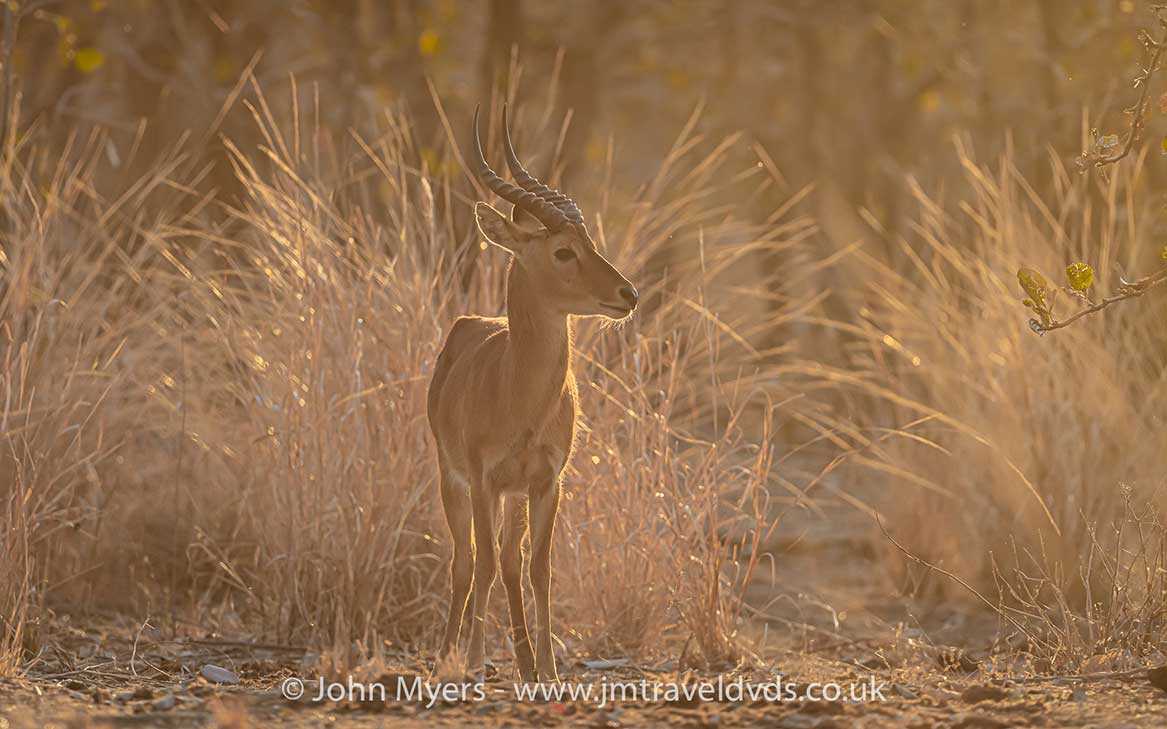
027. ‘NO HIDING PLACE’. Puku. Zikomo Lodge Area, South Luangwa National Park, Zambia
Male Pukus carry distinctive shaped horns, which are thick at the base and reduce to a sharp point. It is a solitary life for most males as they must defend their territories.
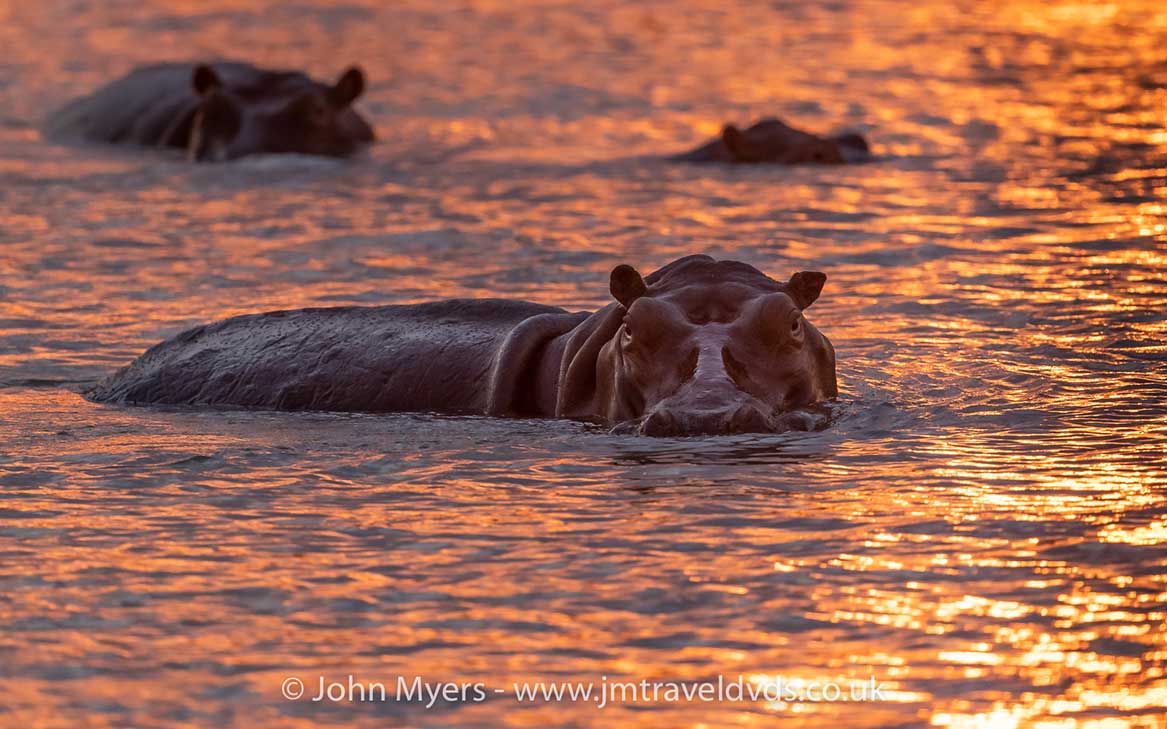
028. ‘SUNDOWNERS’. Hippos. Zikomo Lodge Area, South Luangwa National Park, Zambia
On this evening’s safari we found some hippos resting in the Luangwa River. All seems fairly quiet, no yawns, but maybe just a few occasional grunts. The water level is still reasonably high, allowing the hippos more space to relax. When levels are really low, there are almost too many hippos for the limited supply of river territory and fights break out.

029. ‘POSED AND POISED’. Giraffe. Zikomo Lodge Area, South Luangwa National Park, Zambia
A group of giraffe is called a tower. This resident Zikomo area herd, including youngsters, did not wander off and were extremely calm, given the photographers close proximity.
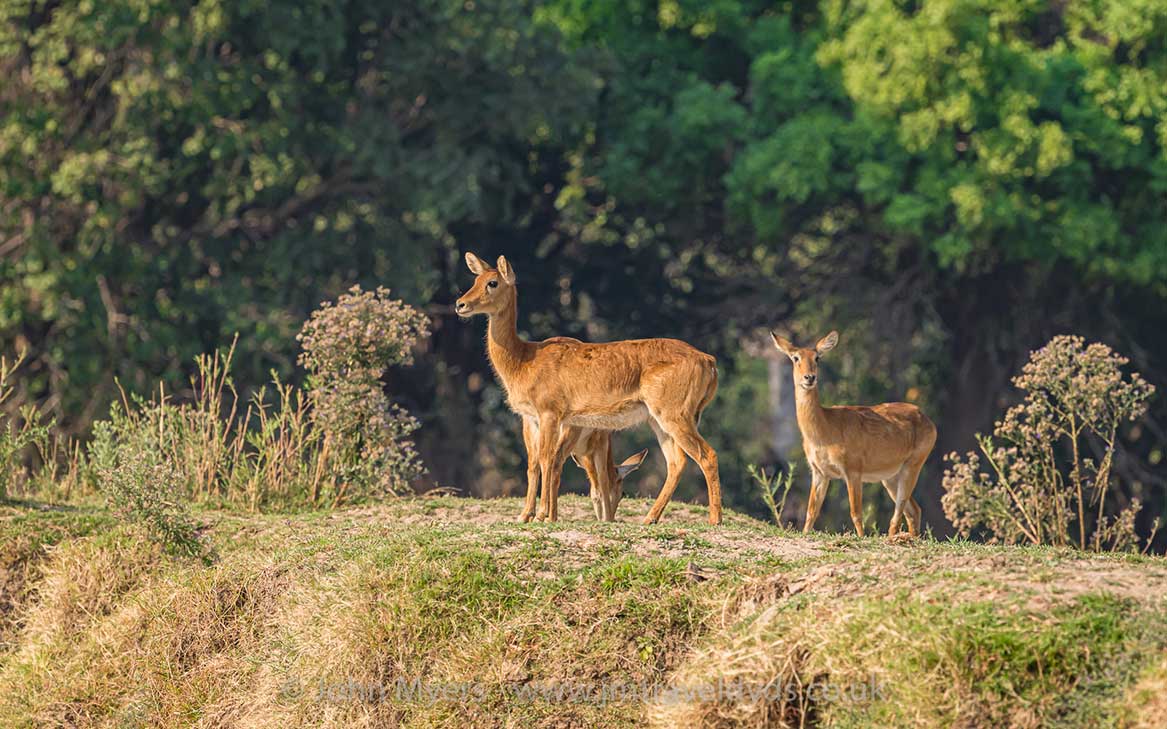
030. ‘CONSTANT VIGIL’. Pukus. Zikomo Lodge Area, South Luangwa National Park, Zambia
Pukus have a developed sense of danger. They often detect danger or threat of a predator before other creatures. Their warning shrill calls can be heard from a long way off.
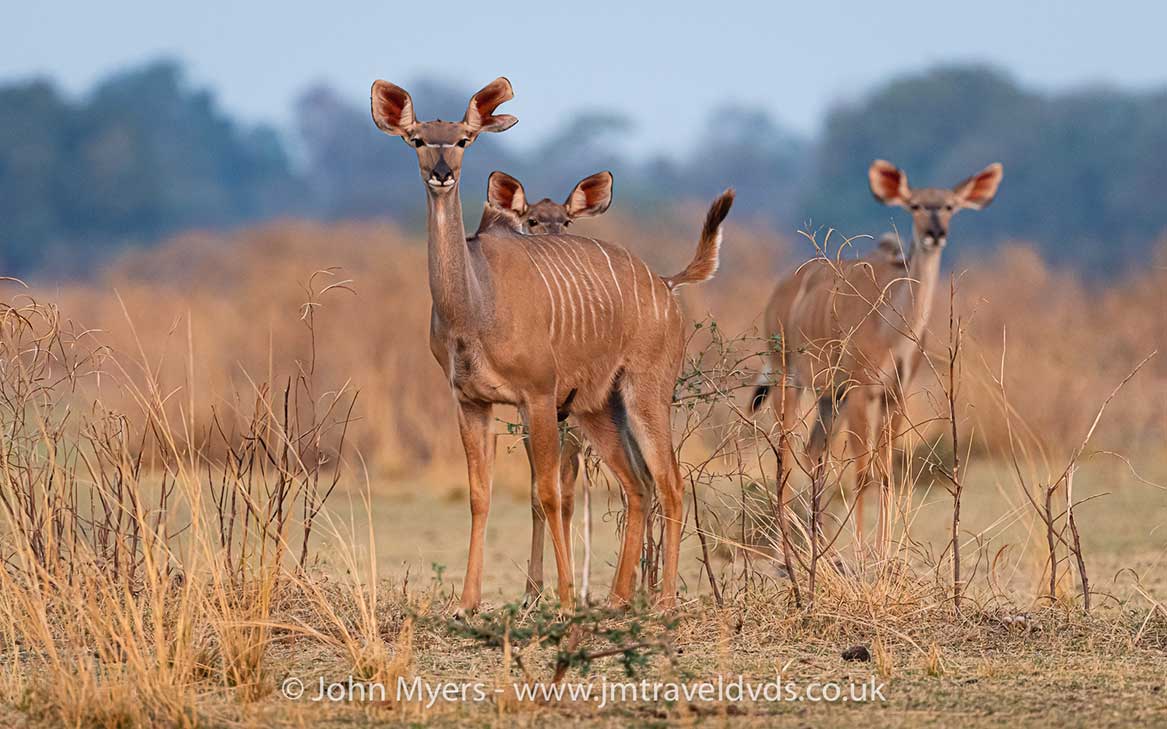
031. ‘ALL EARS’. Kudus. Lion Camp Area, South Luangwa National Park, Zambia
Kudus have excellent hearing and acute eyesight, which helps to alert them to approaching predators, such as lions, spotted hyenas and African hunting dogs.
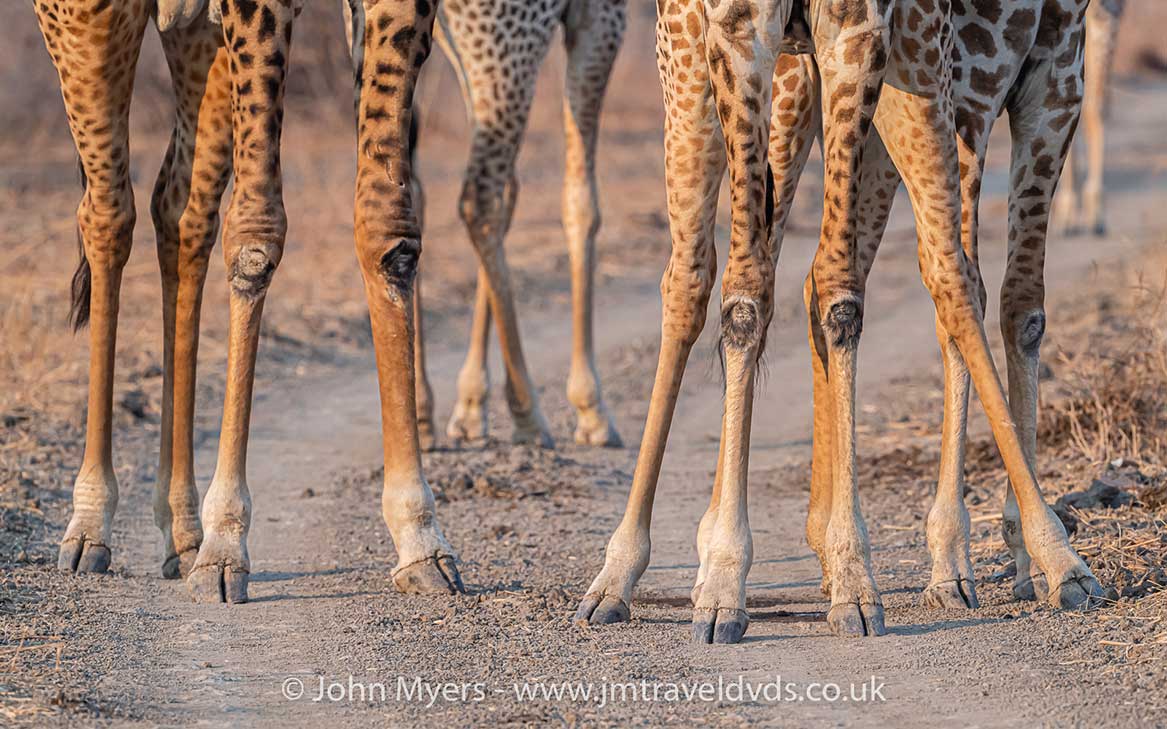
032. ‘MATCHSTICK LEGS’. Giraffes. Lion Camp Area, South Luangwa National Park, Zambia
Specialized bone structure makes skinny giraffe legs study enough to support one ton of body weight. They look as though the legs could collapse at any moment. Giraffes do not have to engage as much energy to support their bodies. They have what is known as suspensory ligaments to help hold then up.
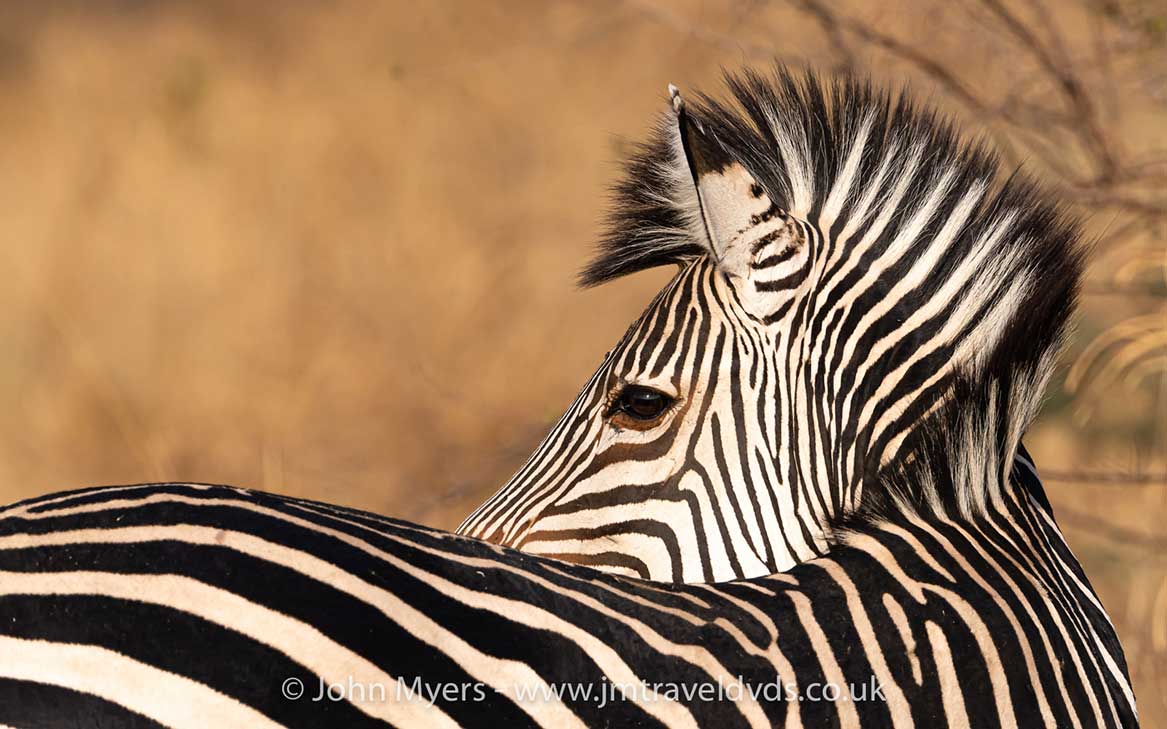
033. ‘MANE OR MAZE’. Zebra. Lion Camp Area, South Luangwa National Park, Zambia
The Crawshey zebra has very narrow stripes compared to other plains zebras. Close-up, the animal is a maze of black and white lines topped with a fine mane.
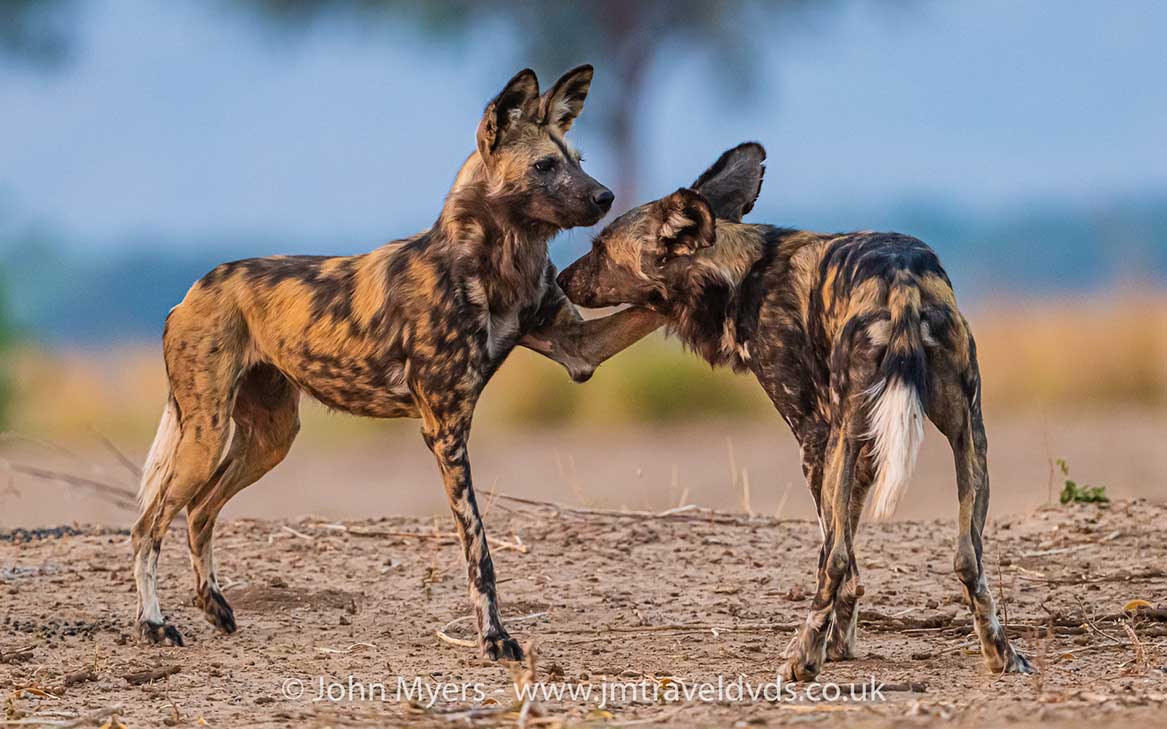
034. ‘GREETINGS’. Wild Dogs. Mana Pools National Park, Zimbabwe
The African hunting dog, seen here in the Mana Pools National Park, is a highly social animal. They live in packs with separate dominant hierarchies for males and females. The wild dog is a deer hunter and will chase pukus and impalas and other antelope until exhaustion.
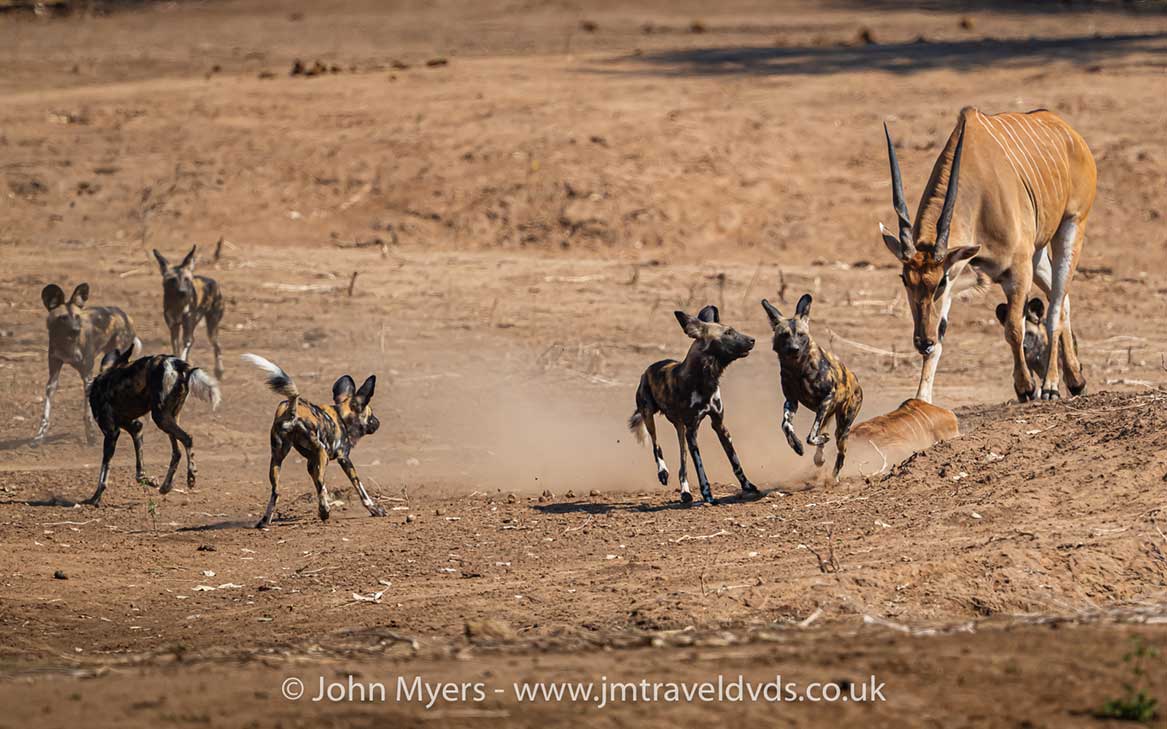
035. ‘COMBAT CHARGE’. Eland versus Wild Dogs. Mana Pools National Park, Zimbabwe
This large female eland, although not really a target for the pack of wild dogs, was protecting a newly born youngster. This animal was the focus of the wild dog. Try as they may, they could not finish the battle for the youngster. Sadly there was a long drawn-out kill that lasted several hours. Nature will take its course. Mesmerising to watch and photograph, but the inevitable final result was not pleasant viewing.

036. ‘STILL WATERS’. Anaconda. Cristolino River, Brazil
The green anaconda forages predominantly in shallow water in wetland habitats. Their prey includes a variety of mammals, birds. reptiles, fish and eggs. The green anaconda grows to a maximum of twenty two feet. They are not driven by insatiable appetites since a meal can last about two months. Whilst digesting, they usually remain still and in the same place. This one was seen over several days in the same location. The other anaconda found in the Pantanal is the yellow anaconda which is somewhat smaller.

037. ‘HEAD ABOVE WATER’. Caiman. Pantanal, Matto Grosso, Brazil
Caiman are relatively small sized crocodiles. The black caiman is the largest caiman species, also found in the Pantanal. When only the head is above water, it is difficult to ascertain its precise size. The average length of a caiman is about eight feet, but the black species can grow up to thirteen feet. There are plenty of these big brutes to be found in the Pantanal. Their only predators are jaguars and anacondas.

038. ‘WADE IN THE WATER’. Jaguar. Rio Cuiaba, Matto Grosso, Brazil
One of the best places to see jaguars is along the banks of the Cuiaba river. From Porto Jofre, fast boats travel at great speeds along the river on the event of a sighting. The marsh and forest land is dense on either bank of the Cuiaba River. But sightings are always possible because of the river and the close availability of caiman and capybaras.

039. ‘BLEND IN’. Green Iguana. Pantanal, Matto Grosso, Brazil
The green iguana, also known as the American iguana, is native from southern Brazil and Paraguay as far north as Mexico. Although this one was filmed on the ground, they are agile climbers and can fall from great heights and remain unhurt. They are good swimmers, propelling themselves through the water with powerful tail strokes.

040. ‘FAMILY TIME’. Capybaras. Rio Cuiaba, Matto Grosso, Brazil
Capybaras form a highly social species. They can be found in groups as large as one hundred, more often living in much smaller groups. They are herbivores, grazing mainly on grasses and aquatic plants. They eat the grasses in the wet season, but in the dry season they go for the reeds.
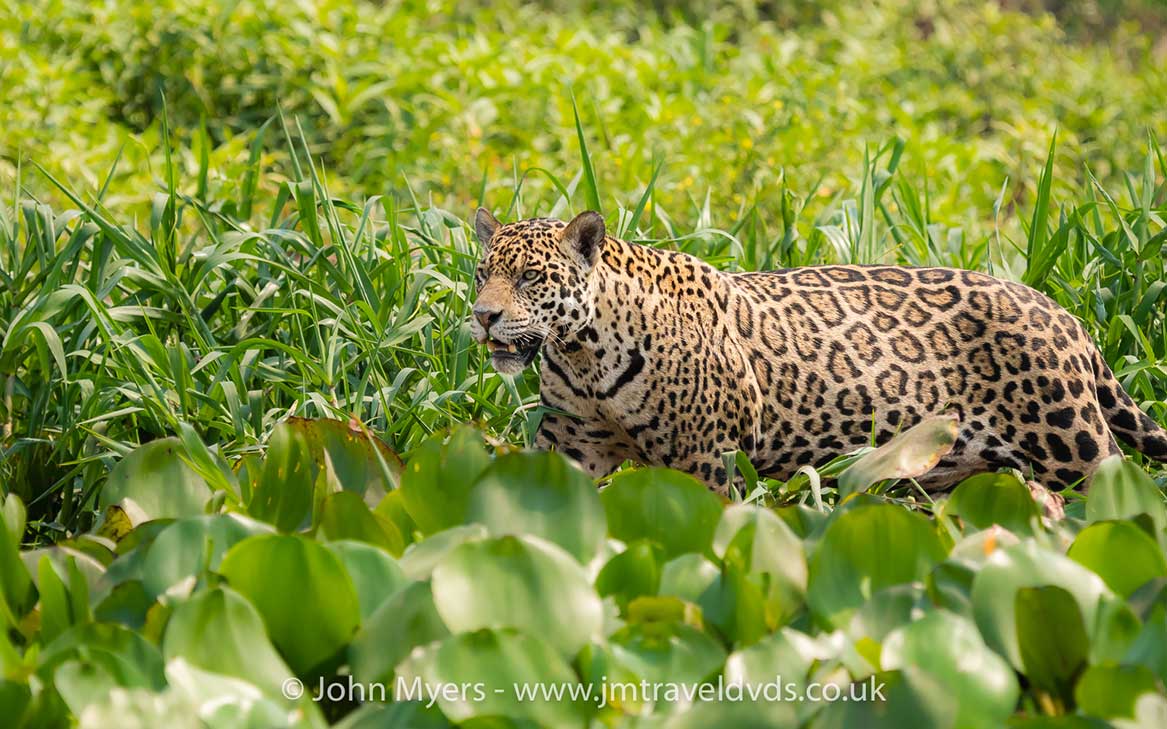
041. ‘PROWL AND SEARCH’. Jaguar. Rio Cuiaba, Matto Grosso, Brazil
Visitors to the Pantanal have the jaguar high on their lists of hoped for sightings. Usually they are not disappointed. The jaguars preferred habitat is tropical and sub-tropical moist forest. They enjoys swimming.
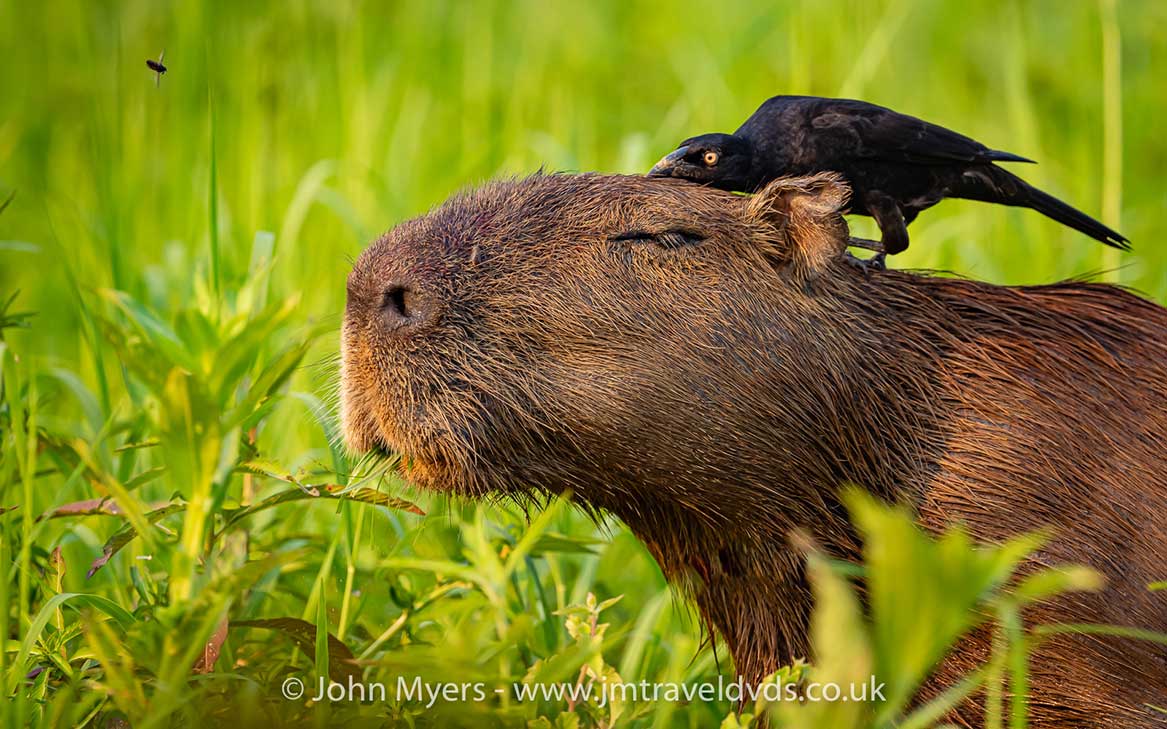
042. ‘FEEL GOOD FACTOR’. Capybara. Rio Cuiaba, Matto Grosso, Brazil
The bird on his head presents no danger and is eating up the grubs. Capybaras are the biggest rodents in the world. Capybaras do not have a long life. Their life span should be between eight and ten years. But seldom do they reach that age. Four years is about the norm, because the animal has numerous predators, notably the jaguar, caiman, eagle and anaconda.
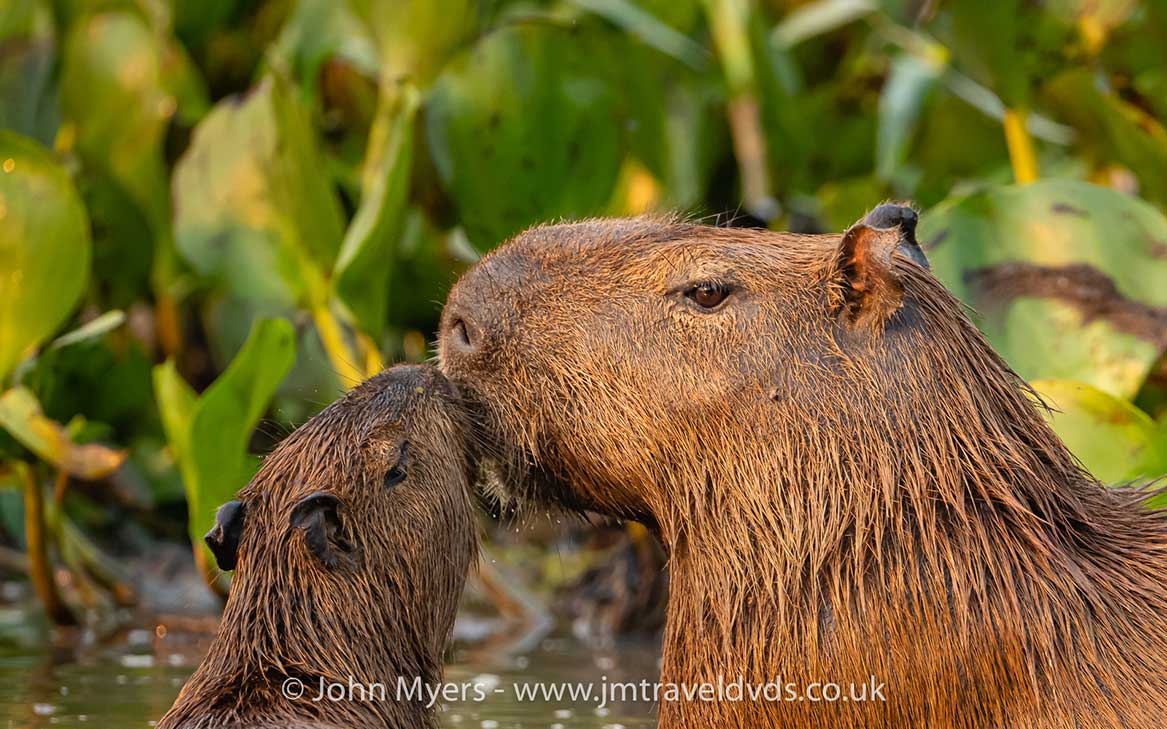
043. ‘CLOSE TOGETHER’. Capybara. Rio Cuiaba, Matto Grosso, Brazil
Like beavers, capybaras are strong swimmers. Their toes are partially webbed for paddling around and their reddish to dark brown fur is long and brittle, ideal for drying out. Young capybaras are more prone to predation from snakes and birds of prey.
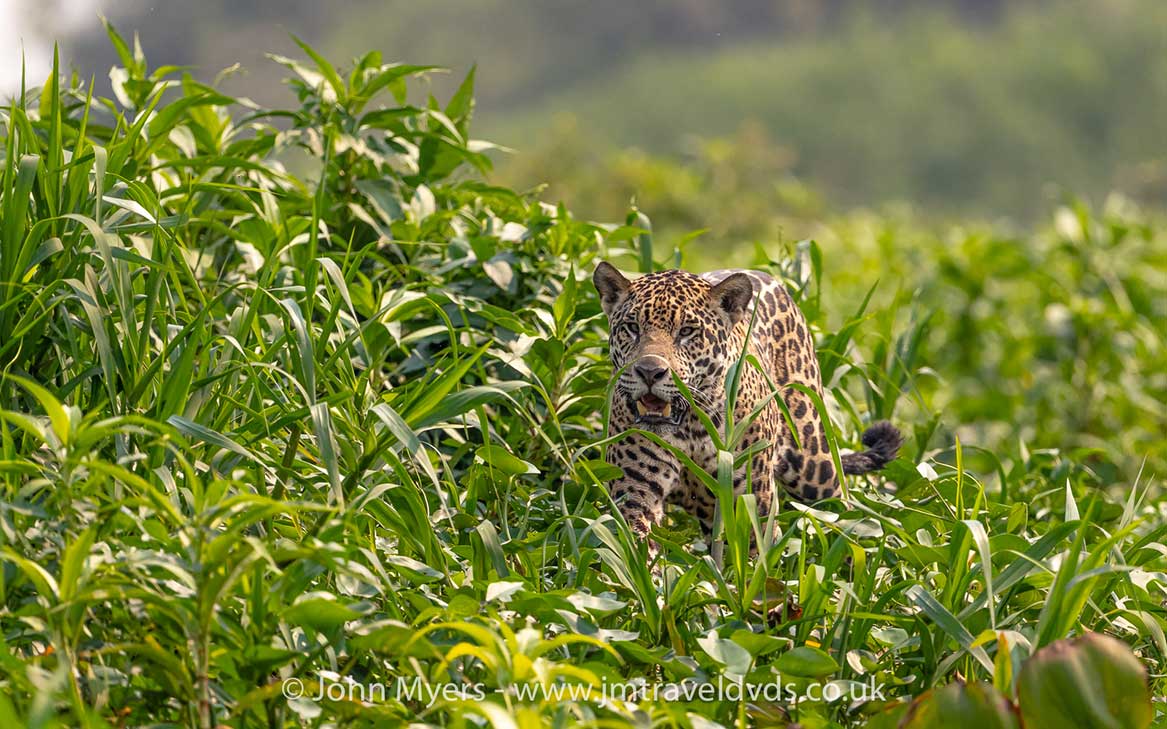
044. ‘IN SIGHT’. Jaguar. Rio Cuiaba, Matto Grosso, Brazil
Like the leopard, the jaguar is a solitary and an opportunistic stalker and ambush mammal.
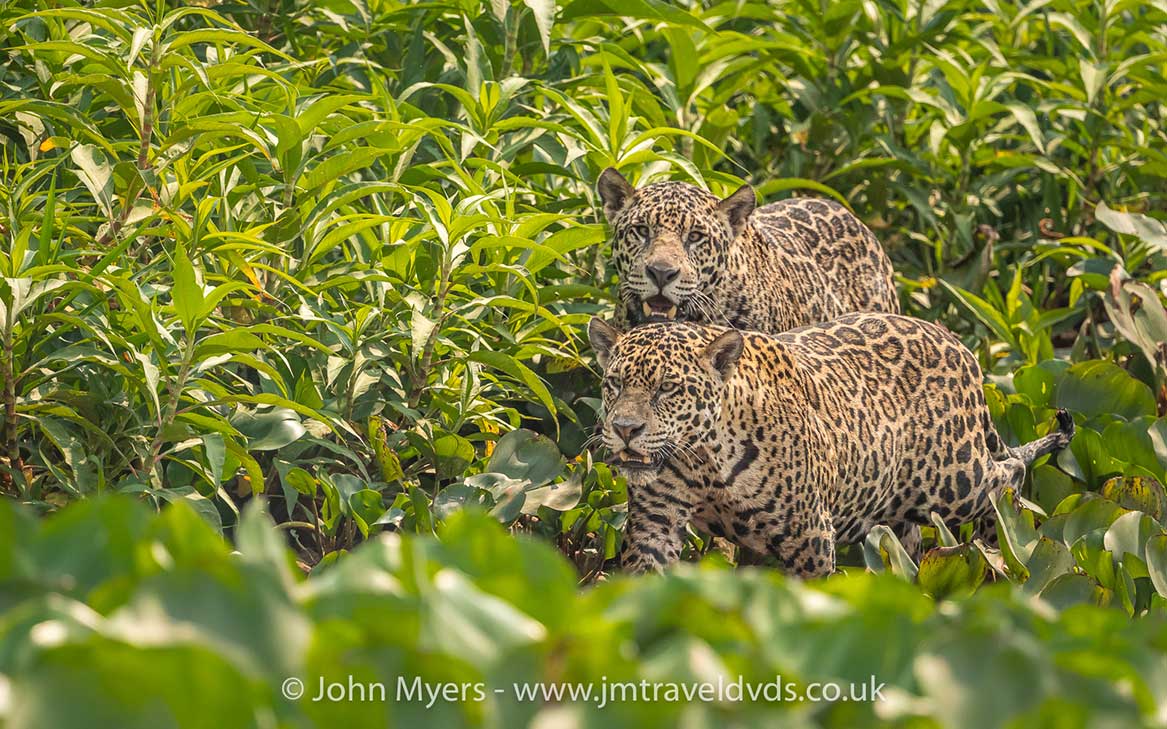
045. ‘HUNTING IN PAIRS’. Jaguar Brothers. Rio Cuiaba, Matto Grosso, Brazil
These are two young brothers prowling in and out of the reeds on the Cuiaba River’s bank. The jaguar is the largest cat in the Americas and third largest in the world after tiger and lion. The adult jaguar is an apex predator, in other words, it is at the top of its food chain and is not preyed on in the wild.

046. ‘FOCUSSED’. Jaguar. Rio Cuiaba, Matto Grosso, Brazil
This spotted cat resembles the leopard, but the jaguar is larger and sturdier. The rosettes on a jaguar’s coat are bigger, hence fewer in number, and usually jet black.

047. ‘WATERSIDE WATCH’. Pukus. Nsefu Sector, South Luangwa National Park, Zambia
Pukus usually live in herds. These two were spotted towards sundown, apparently on their own. No doubt they had strolled down to the water’s edge for a drink.
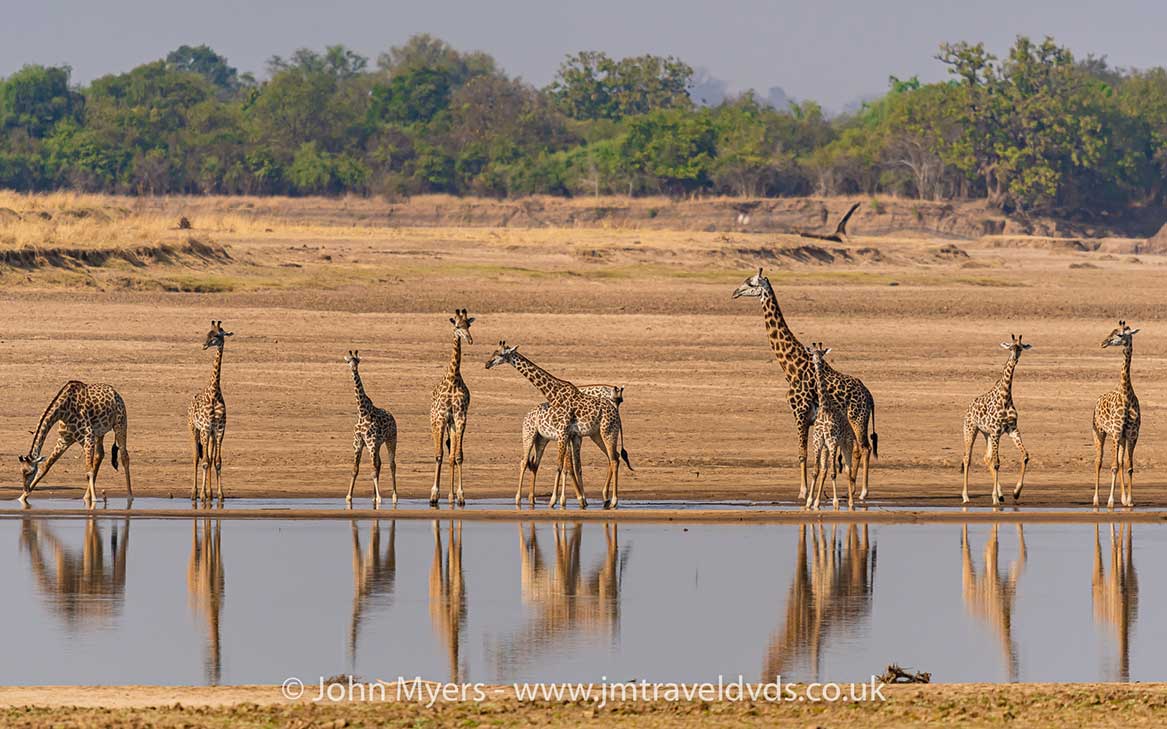
048. ‘DRINKING TIME’. Giraffe. Kafunta Lodge Area, South Luangwa National Park, Zambia
When a giraffe stoops to take a drink, it must spread its front legs and lower its head to the water’s surface. How a giraffe, the tallest animal on earth, manages to propel the water up its long neck to reach its stomach, has been a mystery. But it seems to employ a pump like mechanism.

049. ‘HEADING OFF’. Giraffe. Kafunta Lodge Area, South Luangwa National Park, Zambia
Not all the giraffes drink at the same time. They are always on their guard. When every animal has reached its full drinking limit, the tower (as a group or herd is known as) will turn and proceed in line for their next session of foraging.
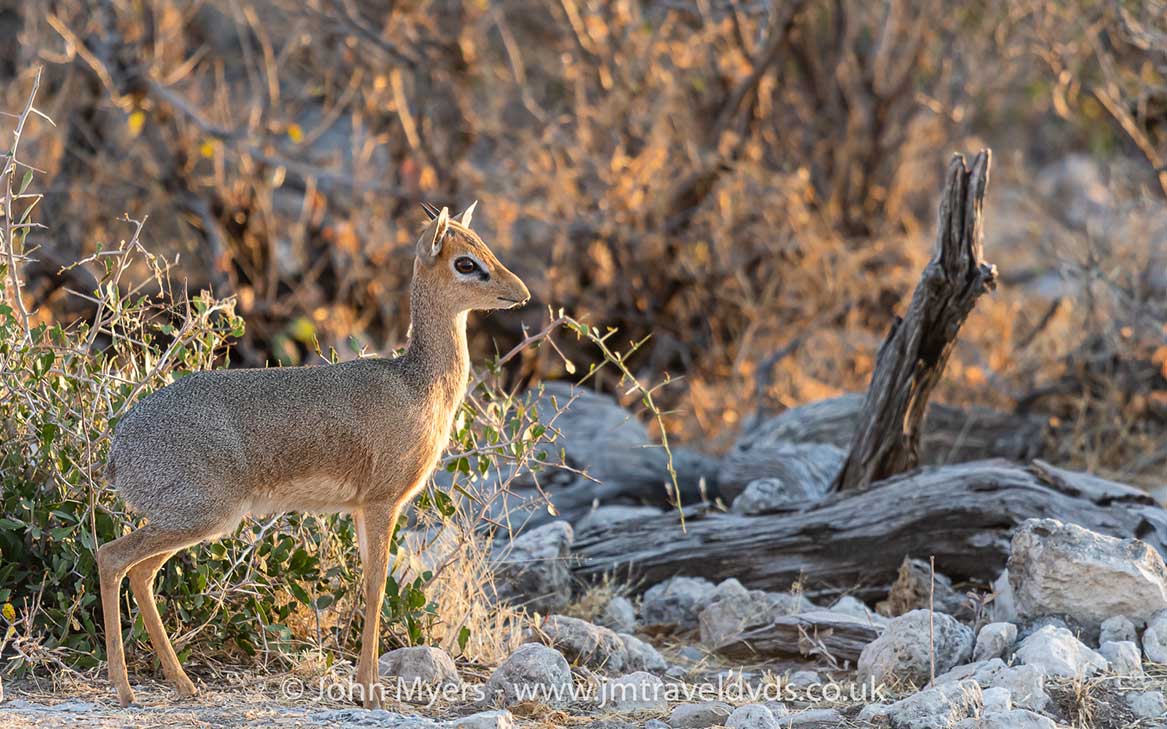
050. ‘SMALL IS BEAUTIFUL’. Dik Dik. Onguma Plains Camp Area, Namibia
One of the smallest antelopes is the Dik Dik. It measures about fourteen inches high and only five kilos in weight. Despite its small size, it is a fearless little mammal. They make their own trails and tunnels not reached by other predators. They are also quite speedy little animals.

051. ‘AFTER YOU’. Impalas. Kafunta Lodge Area, South Luangwa National Park, Zambia
Impalas are fleet runners, who are able to leap distance of up to thirty three feet. They use this technique to escape predators and sometimes, apparently simply to amuse themselves. The impala can clear bushes and other obstacles by soaring ten feet in the air.
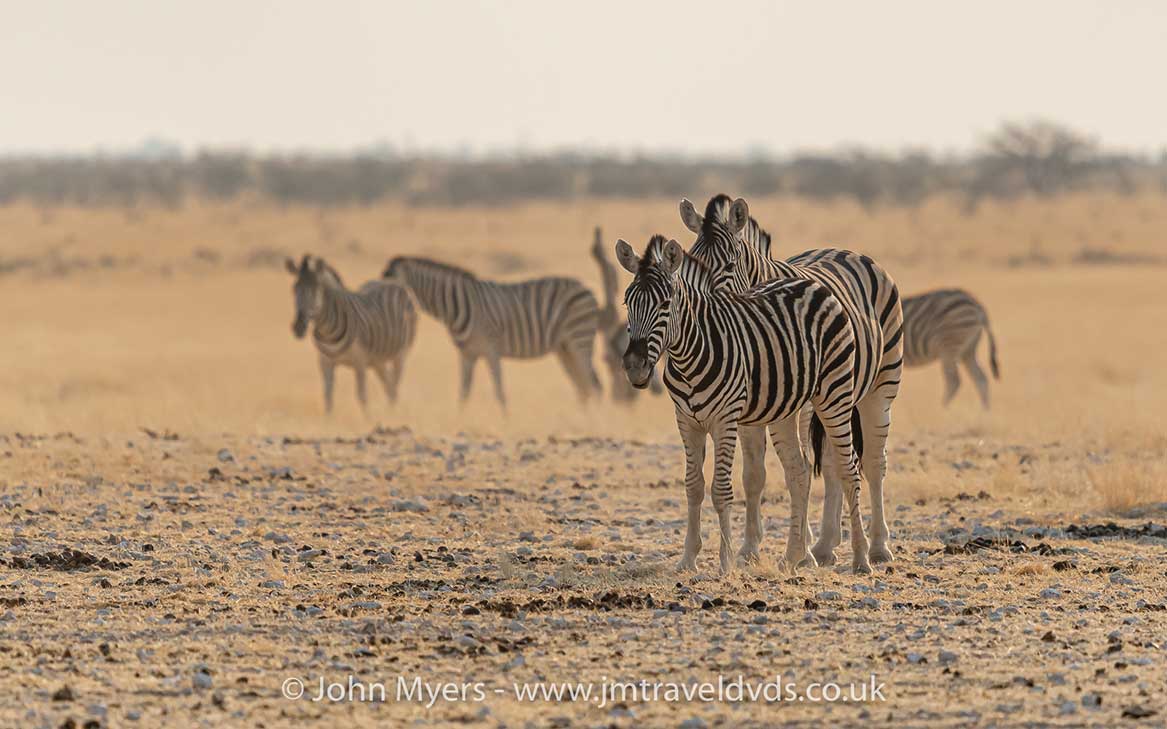
052. ‘BURCHELLY THE SAME’. Zebras. Ongava Game Reserve, Namibia
The Burchell zebra is a southern subspecies of the plains zebra. It is named after the British explorer and naturalist William John Burchell. The zebra is striped on the head, the neck and the flanks and sparsely down the upper segments of the limbs. One or two shadow stripes rest between the bold stripes on the haunch.
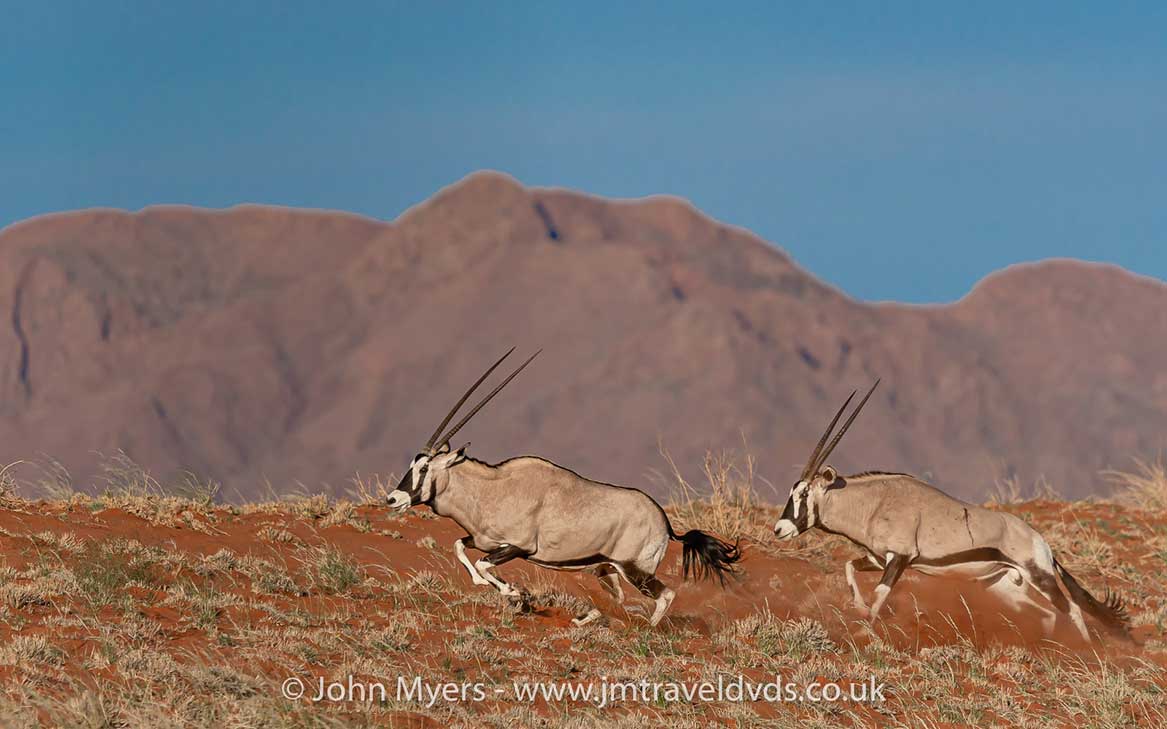
053. ‘ON THE RUN’. Oryx. Wolwedans Lodge Area, NamibRand Nature Reserve, Namibia
All Oryx species prefer near desert conditions and can survive without water for long periods. Their horns are narrow and straight. They can be lethal. The Oryx has been known to kill lions with those horns. They can reach running speeds up to 60 km/h or 37 mph.
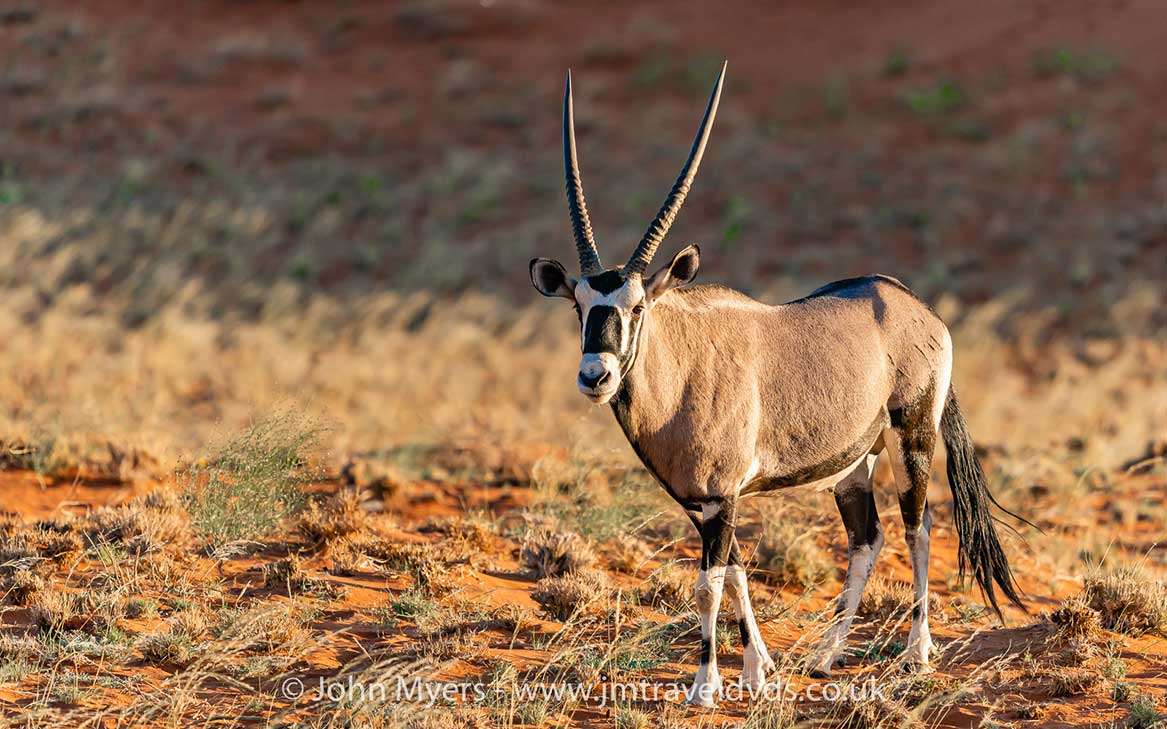
054. ‘DEAD SHARP’. Oryx. Wolwedans Lodge Area, NamibRand Nature Reserve, Namibia
The Oryx, the national animal of Namibia, is prized for its spectacular horns. They average about thirty three inches in length. The females use their horns to defend themselves and protect their offspring. The males use their horns primarily to defend their territories from other males.




